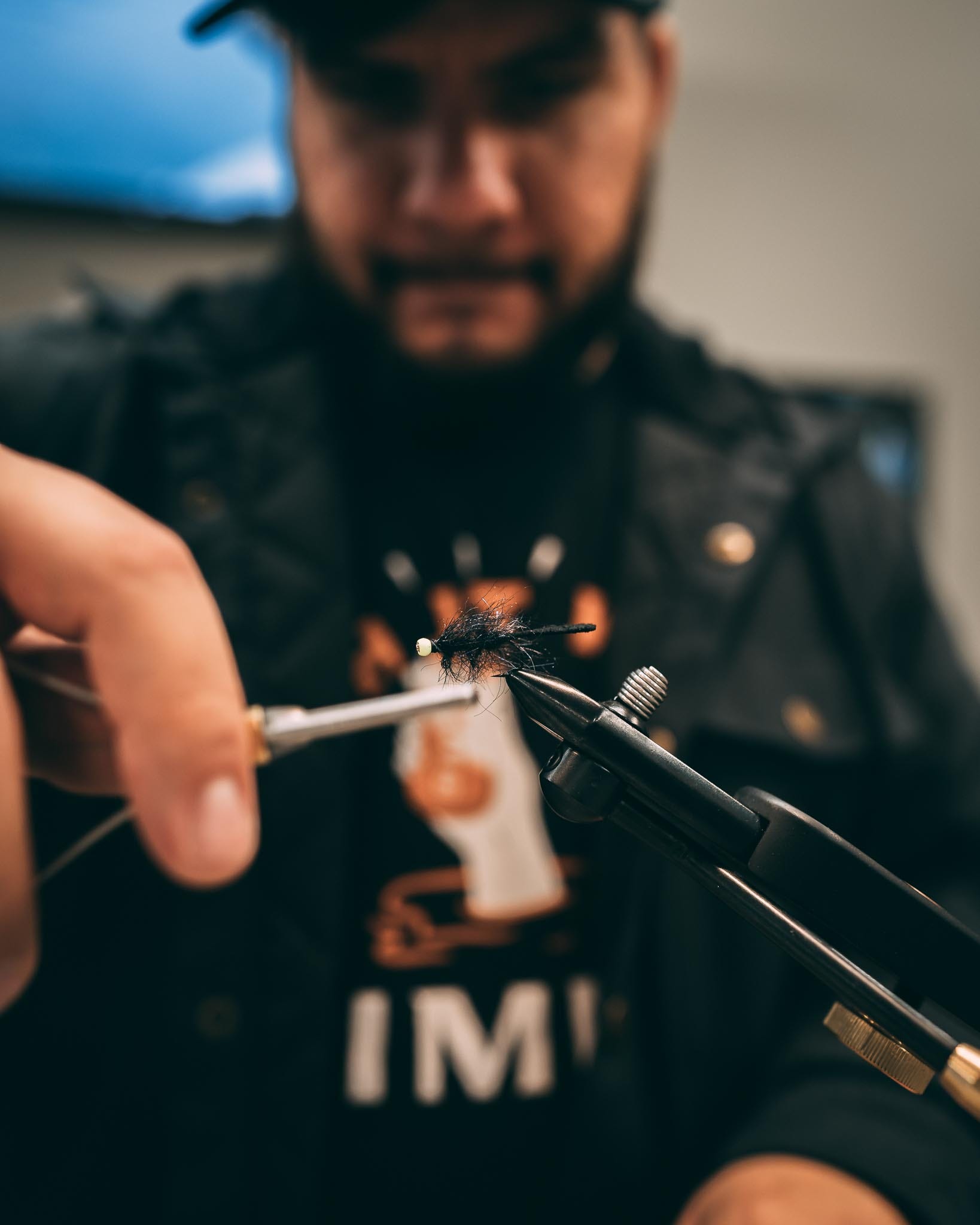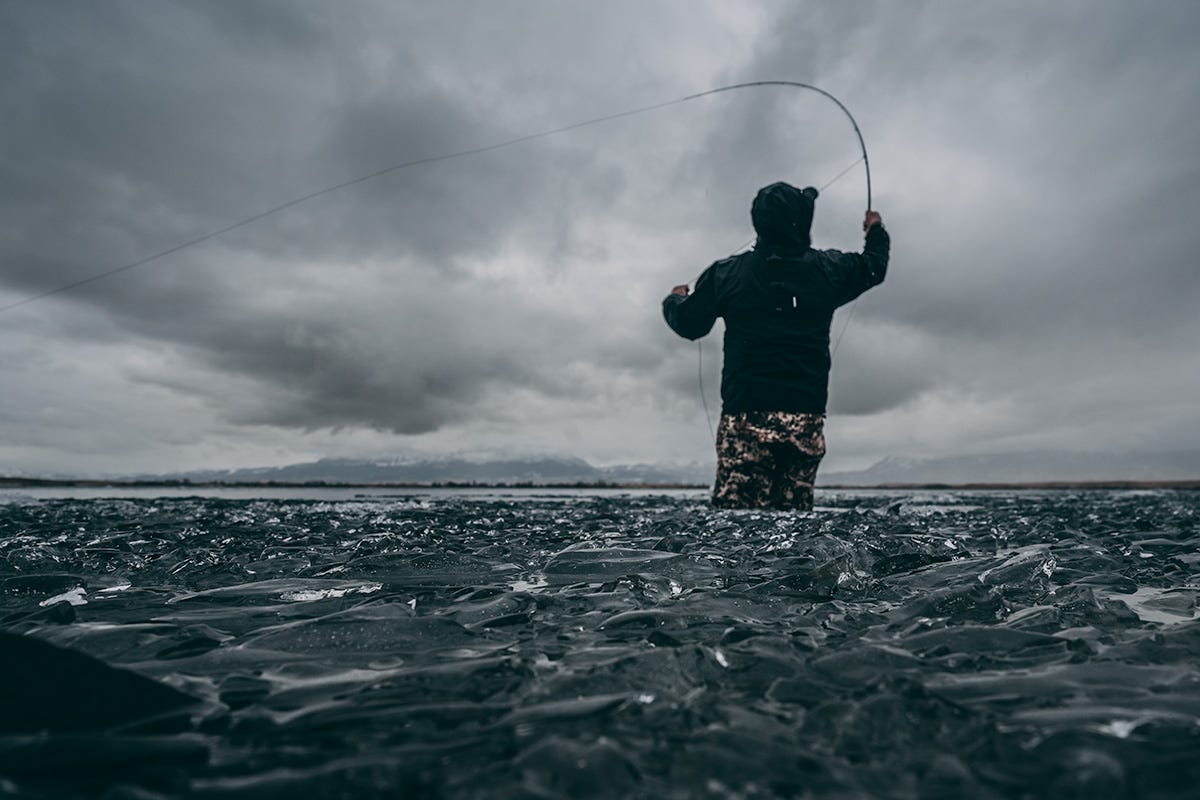Fishing Stillwater for Giant Brown Trout
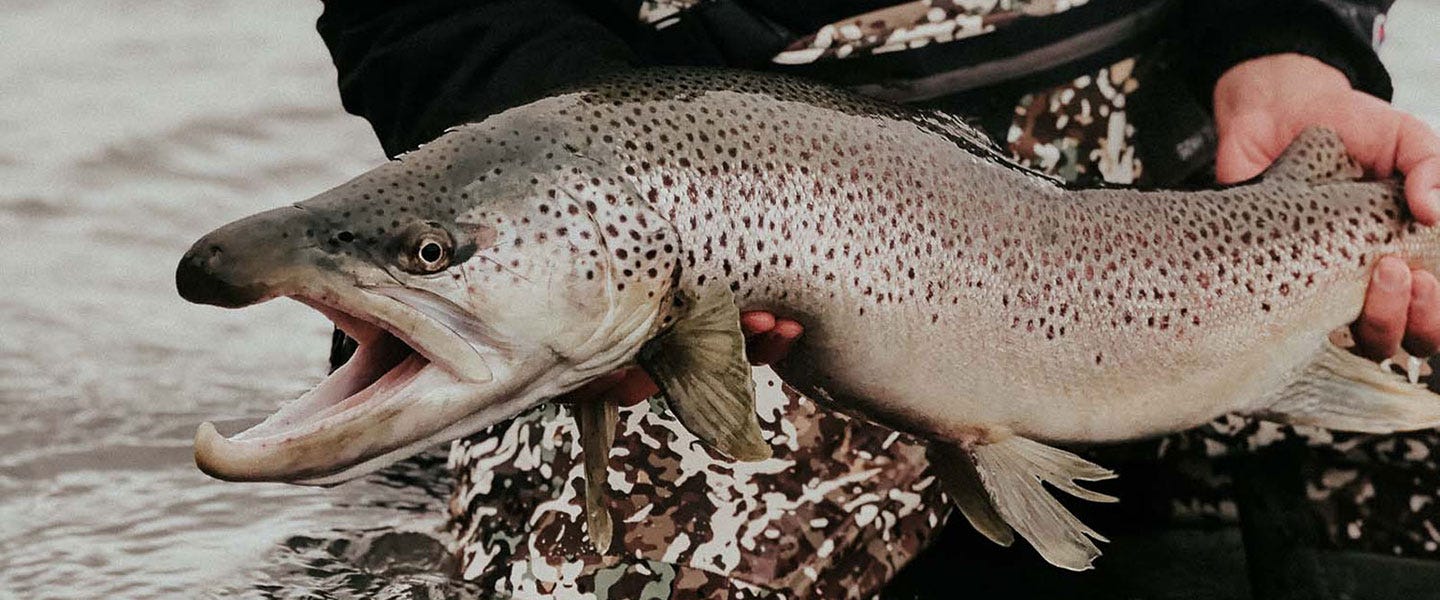
When I was a kid, my imagination led me to believe that fly fishing was exclusively for rivers and I am sure many others thought the same.
As I got older, my dad introduced me to fly fishing and you guessed it, we fished in a river. Where I grew up in Albuquerque, NM there were not many places to fish, let alone fly fish. In the heart of ABQ there is a little gem called Tingley Beach. A trio of stocked ponds where fish are abundant and people of all ages and skills can catch stocked trout. I learned quickly to toss wooly buggers and micro leaches under an indicator during the months when hatches were scarce.
Fast forward, many years later, I live in Montana and gave up the “boring” still water life style. At least that’s what I thought. I would talk to Fred in the fly shop for years about this new “balanced leech” and he swore it was the big fish vacuum. Obviously, I didn’t doubt the man but sitting in one spot on a body of water didn’t sound appetizing.
Years go by and finally I get convinced by Jay D’Arpini (my closest friend and fly-guy behind the camera), who was convinced by Fred Telleen (fly fishing genius, Kenai River King and my boss), to do some still water with the good ole balanced leech. In March of 21’, Jay and I made our way “west” to look for some big trout. Conditions that day were perfect, overcast and windy as hell. Both are a recipe for perfect still water fly fishing.
We parked, got our fishing suits on, drank a beer (or two) and rigged our rods. We started to fish closest to the truck and the static nerves quickly started to hit Jay and I. Within minutes we moved to the other side of the reservoir. Jay launched a cast, further than needed (classic Jay) and hooked one, first cast. Maybe second.
We weren’t familiar with the water, nor did we know the fish's behavior considering a week prior the ice melted. “As soon as ice begins pulling away from the shorelines, the food web kicks into gear. Trout will begin to cruise the shallows looking for food and warmer water temps, making them easy targets for shoreline stalking anglers” -Fred. This is where patience comes in, trust the process and stay in one spot 10 or 15 minutes. If nothing, move 20 feet. Stick to rock bottoms and stay away from sandy, silty bottoms. If it's windy, stay downwind, the fish food gets pushed right to you.
Fred told us about a specific rock where he usually catches fish but failed to give the exact location of this rock. With that, we felt the need to find this magic rock. “This. This is the rock!”- Jay. I leap him, get to another rock and take a swing at the rock joke. Except, I was right. I found the rock, I think. (A year later I found out Jay was shown the location of the rock on google maps, he just forgot. Classic Jay.)
It was cold, windy and my fingers were numb. I was close to giving up on this spot... I see my indicator pause and dance. What surfaced was a “dinosaur” of a Brown Trout. Jay netted that fish and just like that, I love still water fly fishing again.
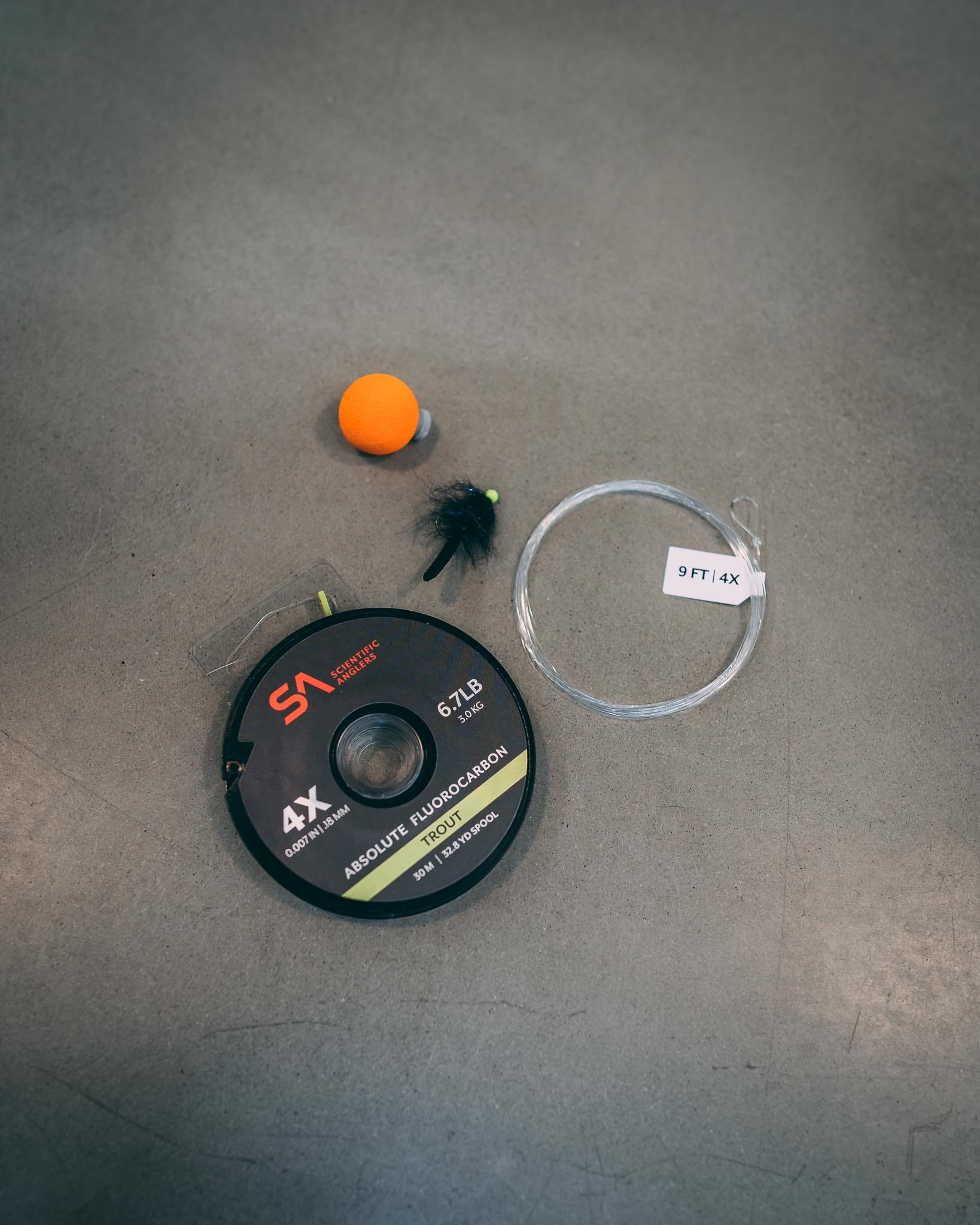

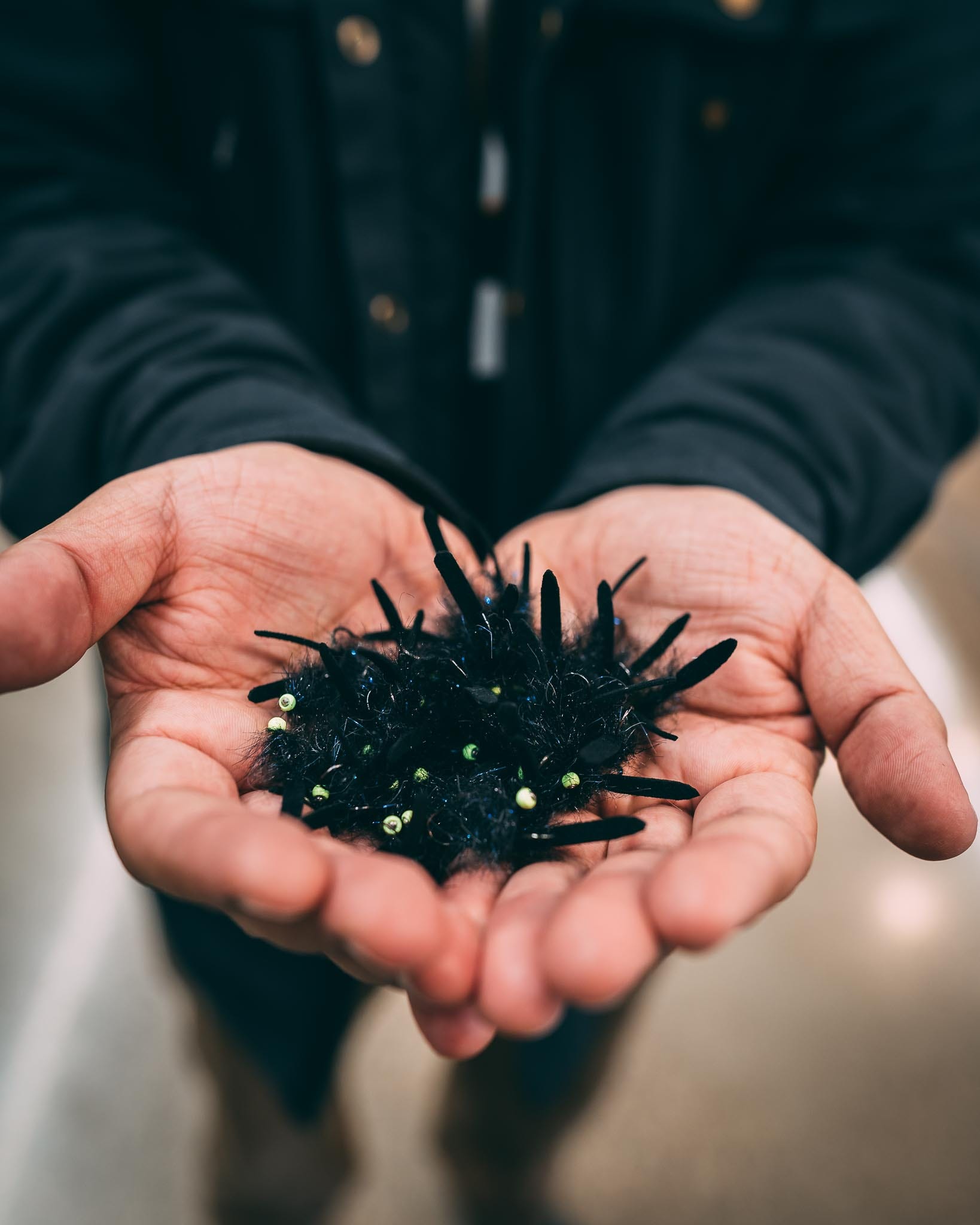

THE SET UP
The fly rod we prefer for still water nymphing would be a 6 or 7 weight of your choice. The perfect rod, in my opinion, is The Fly Project, Project One 10- foot 6 weight. The extra foot makes accurate casts easy and mending nymph rigs effortless. The set up to this still water rig is simple, 9- foot 3x or 4x leader, an indicator and a balanced leech. Fly line to leader, leader to leech with a loop knot, and place your indicator 4-6 feet above the leech (water temps/levels depending).
THE LEECH
The Balanced Leech can be tied with many different materials but what makes fish gravitate to this fly is that it is balanced. A bead tied on a pin, past the eye of a 90-degree hook creates the “balance” when sitting in the water column. This leech sits horizontal in the water, unlike wooly buggers or regular leeches that fall to a more vertical angle. To paint a picture, imagine a windy day, waves and wakes on the surface of the water. With every wave or wake it gives the leech action fish cannot seem to resist. Let the fly do the work. If the water is calm, retrieve slowly, make a few twitches or mends and before you know it, you’ll be hooked up. For double rigging, tie tippet right behind the bead of the leech, and stack on another leach or a nymph, of your choice.
This is all you need to catch fish on still-water on a fly rod, during “ice out”.


